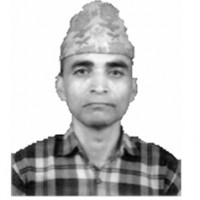Harnessing Wind Energy
Khilendra Basnyat
Development, which has now become a catchword in every country, is not possible without the availability of energy. This is why the demand for energy is increasing rapidly every year in every country, including Nepal. In order to meet the growing demand for energy, different kinds of alternative energy sources can be used, of which wind energy can play a significant role. In fact, wind is another form of energy created by the sun. It is the reaction of the atmosphere to the incoming energy from the sun. Heat causes low pressure areas, whereas the lack of heat results in high pressure. This process causes the wind to below which can be utilised as energy.
Storage system
Although wind energy has the advantage of not introducing waste into the biosphere, it is not a constant and/or predictable as the sun. Despite this, the situation, in general, can be managed by a storage system designed to have the energy available at the time it is needed. One might look at this concern from a different perspective and not see it as a problem at all but simply as a challenge to one's ability to adopt. A propeller-driven turbine can convert the wind energy into electricity at an efficiency ranging from 60 to 80 per cent. Nowadays, endeavours are being made to make it more efficient.
To harness wind energy, one scheme would be to put to use the electricity generated elsewhere which can also be used to run the electrolysis cell when the wind is deficient. However, utilising wind energy is not an easy job because it is the most inconsistent. It is possible to extract such energy only from a power plant which a reasonably steady output. Since new technology has not come up with a practical storage medium, electric storage batteries are out of the question.
The use of wind on land has been found to be more limited than at sea. Until now, wind power has been used only where other sources of power are not available or are highly expensive. Moreover, the use of wind to produce mechanical or electrical power depends critically on whether or not it is necessary to have the power output during any specified time. Windmills used to pump water for farms or home can store energy by raising the water into an elevated tank, whence it and its potential energy can be withdrawn when required. In windy areas, windmills can be widely used to works that do not require the mills to turn constantly. Grinding grains and draining polders are two examples of such mills.
Winds in general are erratic and undependable. But in isolated windy localities where any alternative would be more expensive, windmills can be used to generate electric power and the surplus can be stored in batteries. But suitable batteries are so expensive to be able to complete against available alternative. It has been estimated that about 80 per cent of the world's energy comes from fossil fuels, 20 per cent from dung and vegetable refuse, one per cent from water power, mainly through hydroelectricity and some amounts from nuclear, geothermal and wind power.
In recent times, energy crisis is not a national issue but a global one. Many countries, especially the developing and least developed ones, have been facing the problem of energy resources and fearing a worsening situation in the coming years.
However, there is a tremendous scope for planning energy utilisation in this world. Some of the controlling factors that enter into energy policy depend on the voluntary decisions of the individual and government actions that may restrict individual's freedom. However, both economic and technical question of feasibility depend on their solution on the priority and the magnitude of the efforts applied.
In the least-developed countries like ours, people are still engaged in maintaining a subsistence level. They do not have power resources necessary for their transition which will dependent on the availability of energy. In order to provide the people of the world with a quality of life as high as man's ingenuity can develop, the essential role of energy must be accepted. However, most governments have not paid attention to this fact as yet.
Accurate data
Nepal has a high potential for harnessing wind energy. Apart from the Terai region, Mustang, Khumbu and Palpa have been found to have relative high potential for wind energy. Despite this, no pro-active efforts have been made to tap such energy still now. Although the average wind speed data in Nepal exist for a few selected spots, one cannot expect these hold true in other places.
However, compiling accurate data should be the first step before a suitable windmill can be selected. Although the wind energy is very expensive to tap, it is renewable and everlasting. Therefore, it is expedient to pay special attention to harness this energy as soon as possible since the cost of producing power from it has come down considerably over the years.
(Basnyat is a freelance writer)
Recent News

Do not make expressions casting dout on election: EC
14 Apr, 2022
CM Bhatta says may New Year 2079 BS inspire positive thinking
14 Apr, 2022
Three new cases, 44 recoveries in 24 hours
14 Apr, 2022
689 climbers of 84 teams so far acquire permits for climbing various peaks this spring season
14 Apr, 2022
How the rising cost of living crisis is impacting Nepal
14 Apr, 2022
US military confirms an interstellar meteor collided with Earth
14 Apr, 2022
Valneva Covid vaccine approved for use in UK
14 Apr, 2022
Chair Prachanda highlights need of unity among Maoist, Communist forces
14 Apr, 2022
Ranbir Kapoor and Alia Bhatt: Bollywood toasts star couple on wedding
14 Apr, 2022
President Bhandari confers decorations (Photo Feature)
14 Apr, 2022











